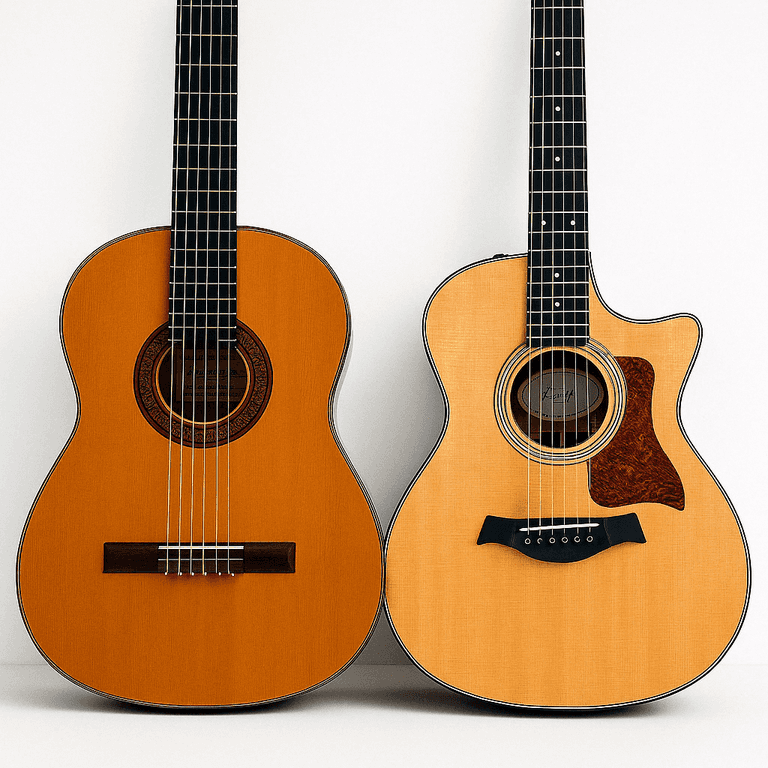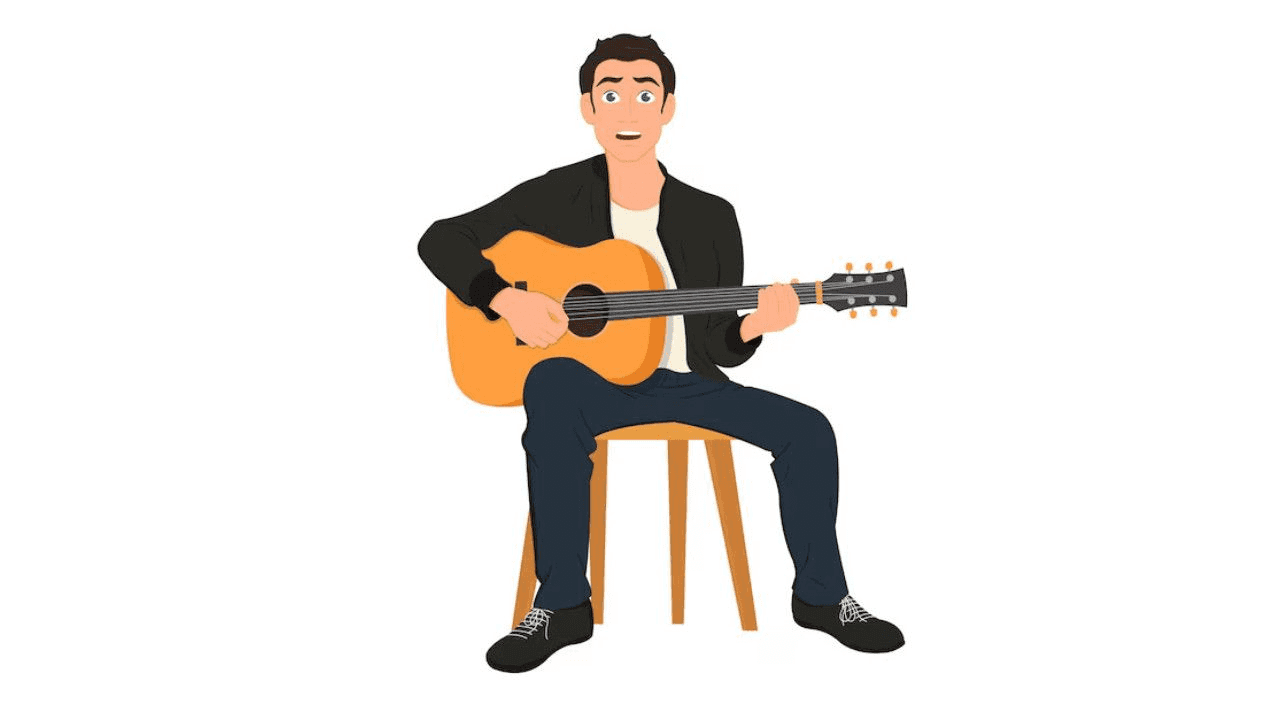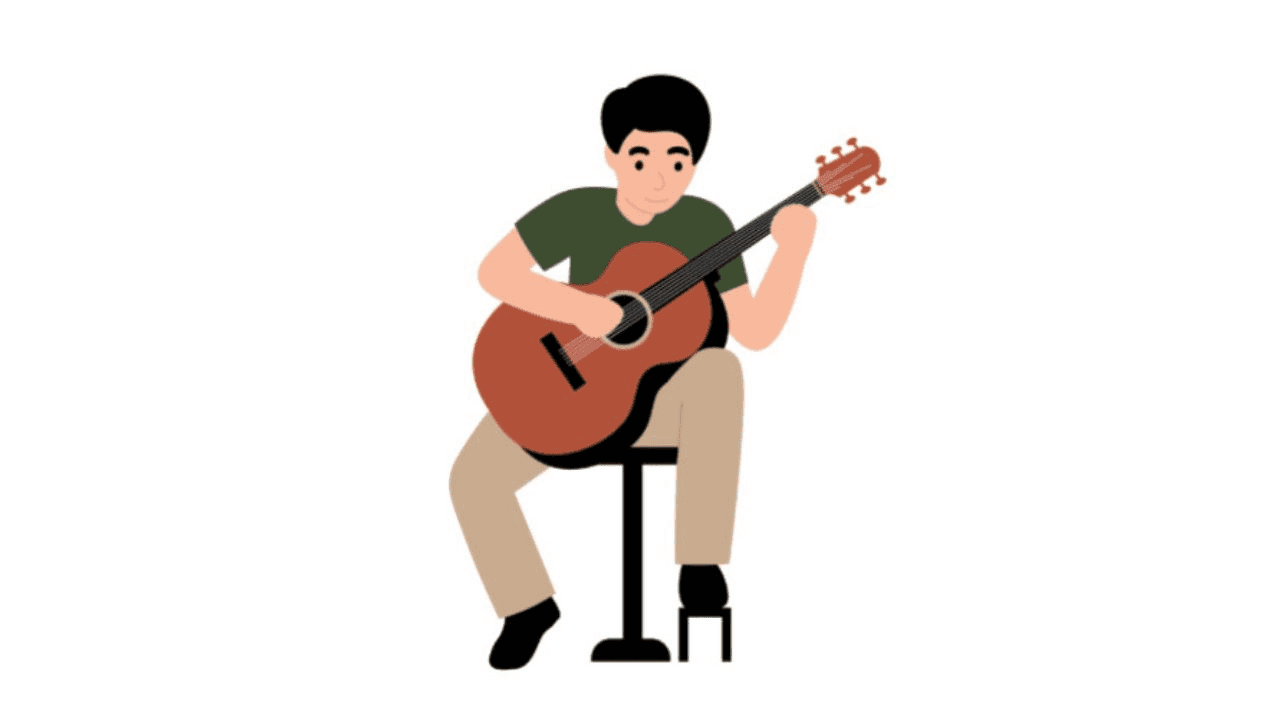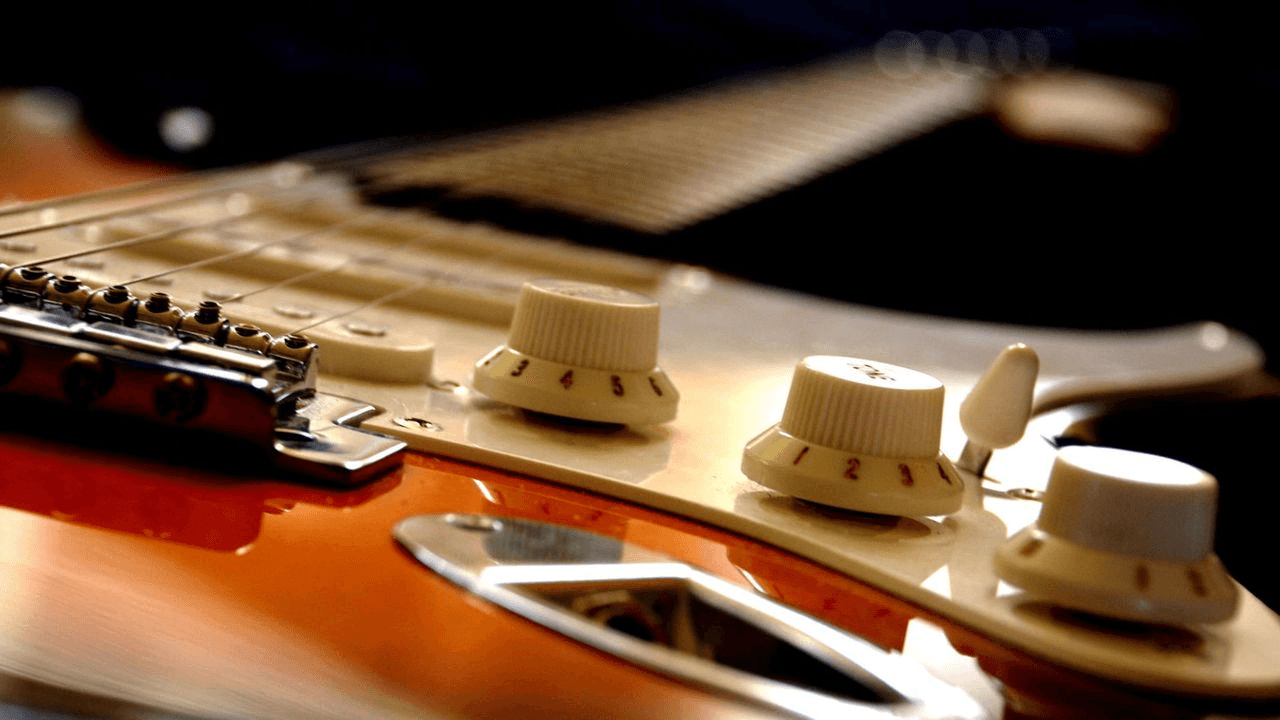What is the difference between a western and a classical guitar?
Are you interested in learning to play a guitar and don't know which guitar suits you best? With the right guidance, you can quickly make a good choice.

A question I am often asked as a guitar teacher is what the essential difference is between a western guitar and a classical guitar. Another question that often accompanies this is which of the two should be preferred by the student in question. In this article I will try to offer a definitive answer to those who are still in doubt. First and foremost, it is noticeable that both types of guitars can be considered to belong to the order of acoustic guitars. An acoustic guitar, as the name suggests, uses acoustics. There is a hollow space in the sound box of the guitar through which the sounds produced by the strings can propagate, reflect and ultimately manifest themselves amplified. Another term that is often used to indicate both classifications of guitars is the “folk guitar”, although this originally referred to the nylon-stringed guitars. There were also folk guitarists in the past, before the era of electric and western guitars, who preferred playing with steel strings on their instrument because it gave them more attractive sounds. These guitars are better known today as the so-called parlour guitars, but have become somewhat less popular with the arrival of the western guitar. Are you interested in learning to play a guitar and do you not yet know which guitar suits you best? With the right guidance, you can quickly make a good choice. Find out more about my guitar lessons and how you can get started right away.
The first classical guitars were played with strings made from sheep gut. The gut strings were stretched tightly and thus produced a warm, soft tone. For the bass strings, multiple gut strands were wound together and later also wound with metals such as copper or silver to give more mass and produce a lower tone. Classical guitars are sold today with nylon strings. These are slightly thicker and less stressful for the fingers. In addition, the soft and warm sound that results from this makes the guitar ideal for classical music, flamenco and fingerpicking. Steel strings were already being tried out from the end of the 19th century to experiment with sound timbre on string instruments and not without success. Steel strings provide a brighter and, due to the higher tension, also a more powerful sound than their nylon counterparts. The guitars are therefore popular in many genres such as folk, pop, country and rock.
The western guitar has a narrower neck than the classical guitar, making it easier to play chords and to switch (the positional movement along the neck with the left hand for right-handed guitarists). These two important factors make the western guitar a preferred choice for many rhythm guitarists and backing musicians. The wider neck of the classical guitar, on the other hand, means that the strings are spaced further apart. This makes it easier to play individual notes, but it does require more stretching of the fingers.
In a western guitar, the strings are almost always attached with bridge pins at the back of the so-called bridge, a wooden board with holes that is attached approximately on top of the middle of the sound box of the guitar. In the classical guitar, the strings are usually tied to the bridge without the use of pins. It is therefore a purely external characteristic, but a traditional custom that has been passed down among guitar manufacturers over the years.
Perhaps the most important feature that distinguishes the two types of guitars is the construction of the sound box. Due to the changing musical styles and performances that took place in increasingly larger spaces and halls at the end of the 19th and the beginning of the 20th century, both solo musicians and those who were part of an ensemble felt the need to be heard better. It goes without saying that a larger sound box, as is certainly the case with a “dreadnought” or “jumbo” western guitar, provides more volume and resonance, especially in the lower frequencies. The sound comes out brighter and more penetrating. However, it must be said that the charm of the classical guitar with its slightly smaller sound box and the resulting softer and warmer tones should not be ignored for the more subtle pieces and melodies.
As already mentioned, the western guitar with its greater presence and clear sounds is widely represented in modern music styles. It can be played with or without the use of a guitar pick. But many fingerstyle followers also represent compelling works from folk, blues and acoustic pop culture today in which the emphasis on melody, bass lines and chords is central. A pick does allow this instrument to be played faster and more consistently with more control when striking the steel strings, which is very nice for styles such as rock, pop / alternative, and country.


The higher string tension and the narrower neck with a closer placement of the strings can make playing the western guitar a bit more difficult for the beginner. Nevertheless, it is important to let your choice of instrument depend on your musical preference, despite these factors. If you want to start with strings that feel softer and that put less pressure on your fingers, learning to play the classical guitar can be an interesting experience. Because I played my first music on the western guitar, I still prefer my new students to use this instrument today.
As you can see, the differences between the two guitars are very big, both in construction and in sound, contrary to what you might expect if you just took a look at both instruments. Many people just want to be able to play a guitar well, but they don't know where to start or which guitar to buy. Hopefully, after reading these words, you've come a little closer to a conclusive answer.

Dive into the world of guitars, techniques, maintenance and musical inspiration. In this blog I share practical tips, answers to frequently asked questions and fun insights.

With personal guidance, flexible lesson times and access to online lesson materials, you can take the first step today!